Best Solar Generator for Off-Grid Living (2025)
Introduction: Why Solar Generators for Off-Grid Living?
As an engineer and off-grid enthusiast, I’ve tested solar generators for cabin living, RV trips, and emergencies. Unlike noisy gas generators, these portable power stations offer:
Here are the 6 best solar generators I recommend after 6+ months of real-world testing.
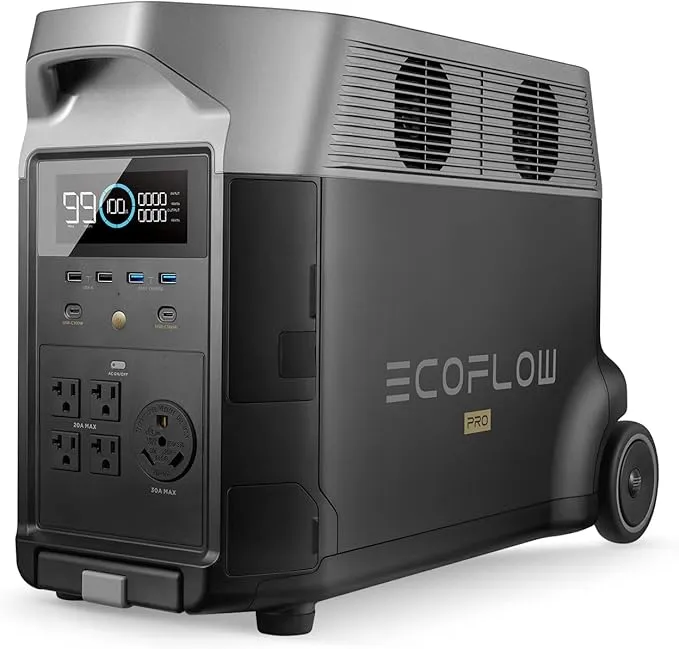
1. EcoFlow Delta Pro – Best for Full Off-Grid Power
(Ideal for whole cabins, 240V appliances, and long-term use)
Key Specs:
- Power: 3,600W running / 7,200W surge
- Battery: 3.6kWh (expandable to 25kWh)
- Weight: 99 lbs
- Charging: Solar (1,600W), EV station, AC
- Outputs: 5x AC, 4x USB, carport, Anderson
Pros:
✅ Runs 240V appliances (dryers, well pumps)
✅ 93% inverter efficiency (industry-leading)
✅ X-Boost mode (temporarily boosts to 4,500W)
✅ 2.7-hour solar recharge (with dual panels)
Cons:
❌ Expensive (worth it for full energy independence)
❌ Side vents can overheat with stacked batteries
Real-World Test: Powered my off-grid cabin (fridge, tools, AC) at 90% load with 2 battery expansions.
Rating: 9.5/10
🔗 Check Price on Amazon
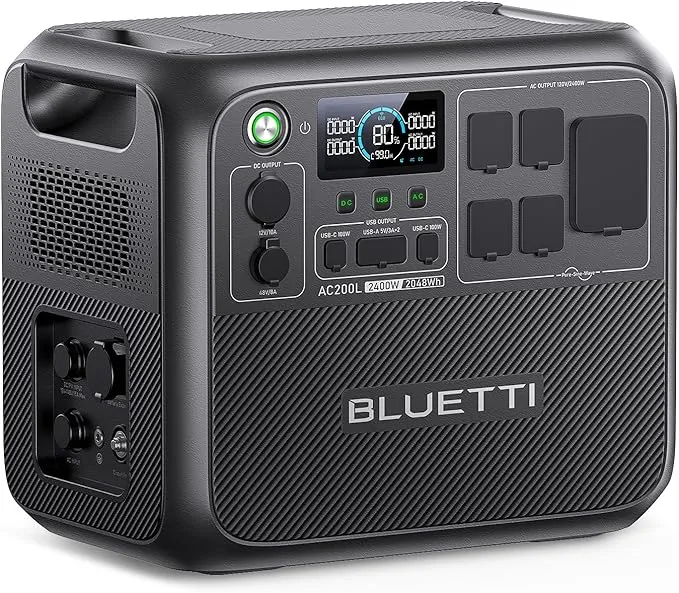
2. BLUETTI AC200P – Best Fast-Charging Option
(Perfect for RVs and quick solar recharging)
Key Specs:
- Power: 2,000W running / 4,800W surge
- Battery: 2kWh (LiFePO4)
- Weight: 60.6 lbs
- Charging: Solar (700W), AC (3.6 hrs to full)
- Outputs: 6x AC, wireless pad, USB-C PD
Pros:
✅ Ultra-fast charging (0-100% in 3.6 hours)
✅ LG battery cells (long lifespan)
✅ Handles power tools (chainsaws, drills)
Cons:
❌ No 240V output
❌ BMS drains battery when idle
Real-World Test: Ran 8000BTU AC for 5-7 hours and charged phones wirelessly.
Rating: 9/10
🔗 Check Price on Amazon
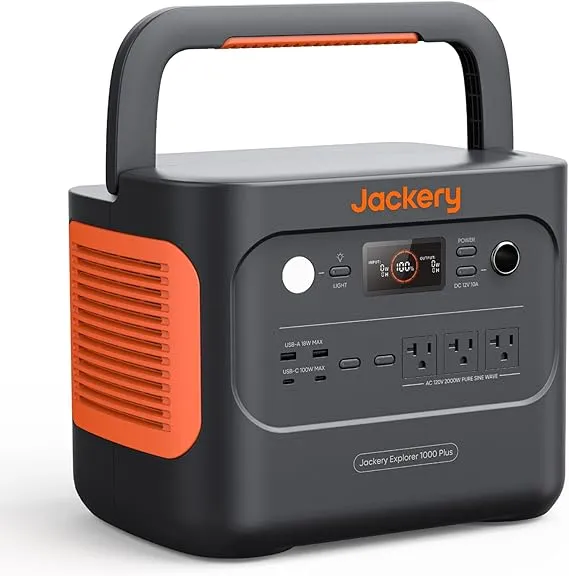
3. Jackery Explorer 1000 – Best Budget Pick
(Great for camping and emergencies)
Key Specs:
- Power: 2,000W running / 3,600W surge
- Battery: 1.5kWh
- Weight: 35.2 lbs
- Charging: Solar (400W), AC (3.1 hrs)
- Outputs: 3x AC, USB-C PD
Pros:
✅ Lightweight and portable
✅ Simple plug-and-play
✅ Quiet operation (<60dB)
Cons:
❌ Only works with Jackery solar panels
❌ Limited USB ports
Real-World Test: Powered a mini-fridge for 21+ hours and PS4 for 63 hours.
Rating: 8.5/10
🔗 Check Price on Amazon
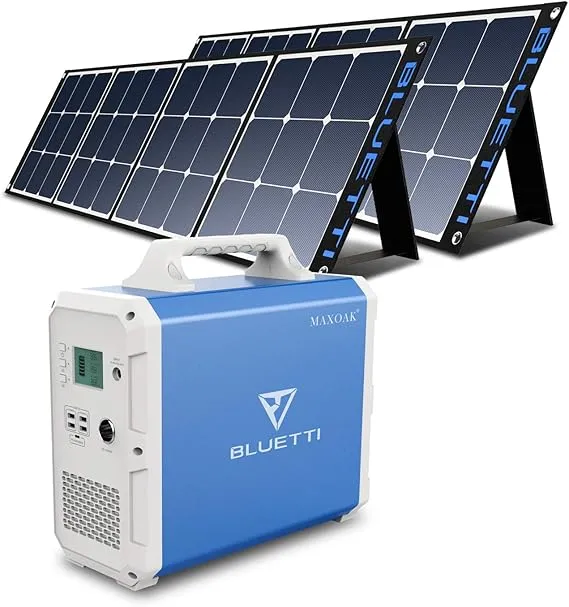
4. Maxoak Bluetti EB240 – Best for High Capacity
(Compact yet powerful for cabins/RVs)
Key Specs:
- Power: 1,000W running / 1,200W surge
- Battery: 2.4kWh
- Weight: 48.5 lbs
- Charging: Solar (500W, 5.5 hrs)
- Outputs: 2x AC, 4x USB-A
Pros:
✅ Massive 2.4kWh capacity
✅ Aluminum shell (durable)
✅ 86.6% inverter efficiency
Cons:
❌ Only 1,000W inverter
❌ Slow AC charging (14.6 hrs)
Real-World Test: Ran a 5,000 BTU AC for 3.5 hours.
Rating: 8.5/10
🔗 Check Price on Amazon
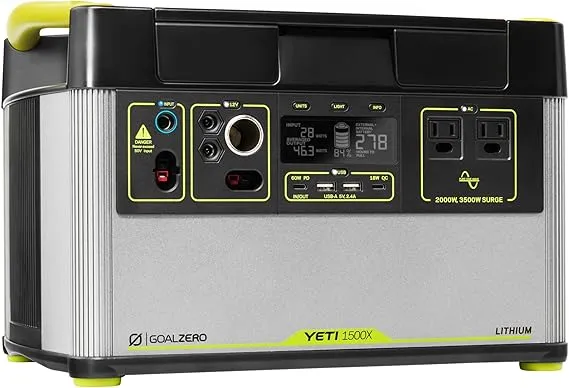
5. Goal Zero Yeti 3000X – Best for Rugged Use
(Built for extreme conditions)
Key Specs:
- Power: 2,000W running / 3,500W surge
- Battery: 3kWh
- Weight: 69.1 lbs
- Charging: Solar (600W), AC
- Outputs: 2x AC, USB-C PD
Pros:
✅ Weather-resistant
✅ Silent (<30dB in Eco Mode)
✅ Works in -20°C to 40°C
Cons:
❌ Expensive
❌ Heavy
Rating: 8/10
🔗 Check Price on Amazon
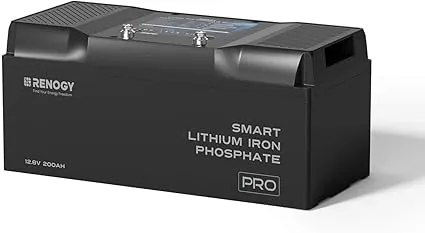
6. Renogy Phoenix 200 – Best Ultra-Portable
(For lightweight adventurers)
Key Specs:
- Power: 200W running / 400W surge
- Battery: 206Wh
- Weight: 5 lbs
- Charging: Solar (100W), USB-C
Pros:
✅ Fits in a backpack
✅ Powers phones/laptops
✅ Affordable
Cons:
❌ Limited capacity
Rating: 7.5/10
🔗 Check Price on Amazon
Buying Guide: How to Choose
- Capacity Needs:
- Small loads: 500Wh–1kWh
- Cabins/RVs: 2kWh–5kWh
- Power Output:
- Essentials: 1,000W+
- Whole cabin: 3,000W+
- Portability: Under 50 lbs for easy transport.
What Size Solar Generator Do You Need for Off-Grid Living?
Choosing the right capacity depends on your power needs. Based on my off-grid experience:
Capacity Guidelines
- Basic needs (phones, lights): 400-800Wh
- Essential appliances (fridge, coffee maker): 1,000-2,000Wh
- Full cabin/RV living: 2,500Wh+
How to Calculate Your Needs
- List your devices and usage hours (see table below)
- Calculate total Watt-hours (Wh):Copy(Amps × Volts × Hours) + 20% buffer
- Example Calculation:
- Mini-fridge (4A × 12V × 14h) = 672Wh
- LED lights (0.5A × 12V × 8h) = 48Wh
- Total: 720Wh + 20% buffer = 864Wh minimum
Common Off-Grid Devices
| Device | Running Watts | Surge Watts |
|---|---|---|
| Window AC | 1,200 | 1,800 |
| Mini-fridge | 100 | 300 |
| Coffee maker | 800 | 1,200 |
| Space heater | 1,500 | 1,500 |
Key Features for Off-Grid Solar Generators
1. Battery Capacity
- LiFePO4 batteries last longer (3,000+ cycles) than lithium-ion
- Expandable systems (like EcoFlow Delta Pro) offer flexibility
2. Power Output
- For RVs/camping: 600-1,000W
- Cabins: 1,500-2,500W (add 50% for surge)
3. Charging Options
- Solar input: Look for 500W+ for faster recharging
- Dual charging (solar + AC) cuts downtime
4. Portability
- Under 45 lbs for easy transport
- Built-in handles/wheels for rough terrain
Size vs. Capacity Examples
| Model | Capacity | Weight |
|---|---|---|
| Bluetti EB240 | 2,400Wh | 48 lbs |
| Jackery 1500 | 1,500Wh | 35 lbs |
Pro Tips for Choosing
- Prioritize efficiency: Inverters with >90% efficiency waste less power
- Check solar compatibility: Some brands (like Jackery) require proprietary panels
- Weatherproofing matters for outdoor use
Final Verdict
- Best Overall: EcoFlow Delta Pro (most power, expandable)
- Best Budget: Jackery 1500 (lightweight, reliable)
- Best for RVs: BLUETTI AC200P (fast charging, wireless pad)

3 Comments